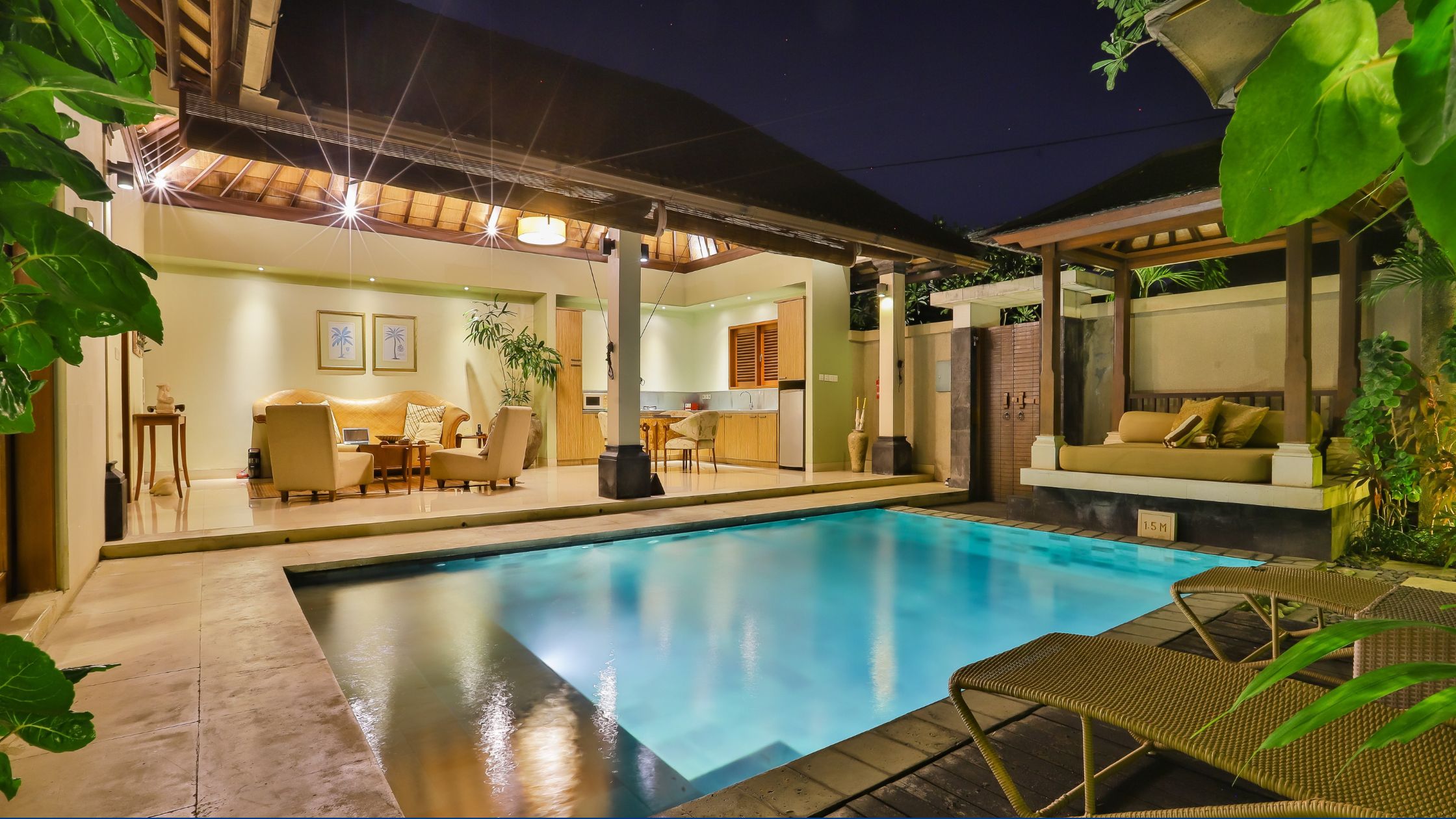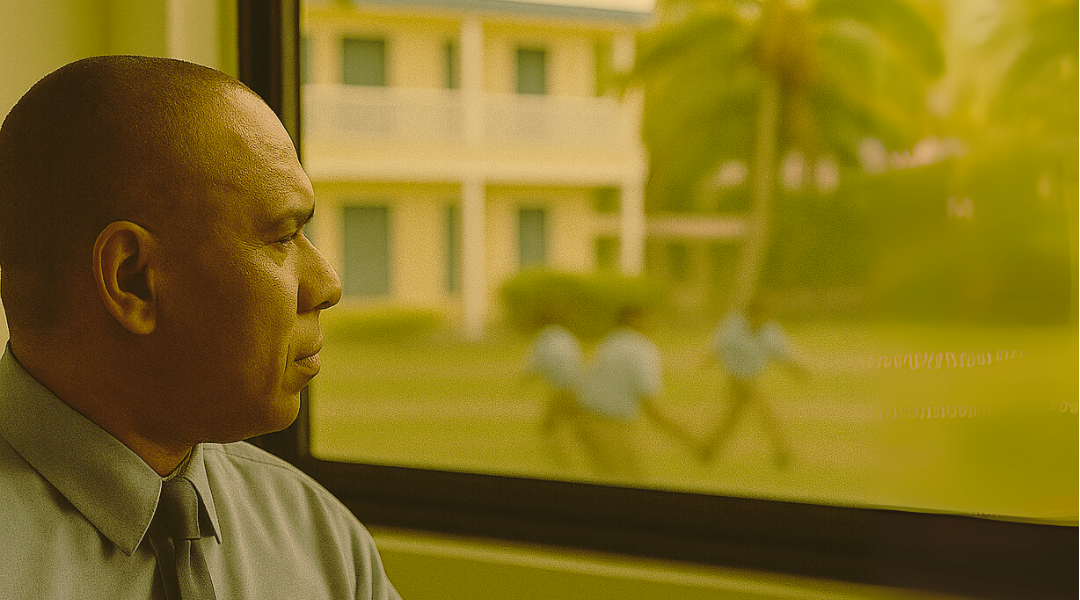Montserrat’s hospitality sector is rich in potential, but visually and experientially, it’s stuck in a time warp. From hotels and Airbnb’s to guesthouses and villas, much of our accommodation inventory still carries the look and feel of the early 1990s and 2000s. For a destination that demands high travel costs, our aesthetic doesn’t match the expectation. The result is a jarring disconnect between price and experience that turns potential guests away before they even book.
Then and Now: From Resilience to Stagnation
In the years following the devastation of Hurricane Hugo in 1989, homes and national infrastructure were rebuilt or reimagined with urgency and resilience. The subsequent volcanic eruptions left these new buildings covered with ash and uninhabitable. In the early 2000s, hastily built homes in the North were designed for function, not impact or to reflect the artistic and cultural identity of Montserrat. But what was once a testament to survival has now become a symbol of stagnation. Few properties have undergone significant upgrades since those early post-eruption years, and it shows.
What might have passed for decent in 2005 and forgivable, given the crisis, now appears tired and dated. Tiled countertops, heavy floral fabrics, metal frame beds, mismatched furniture, and low-quality fixtures no longer cut it. In a world where Airbnb hosts in St. Maarten and boutique hotels in Antigua compete for the same market, first impressions matter, and Montserrat’s are not good enough.
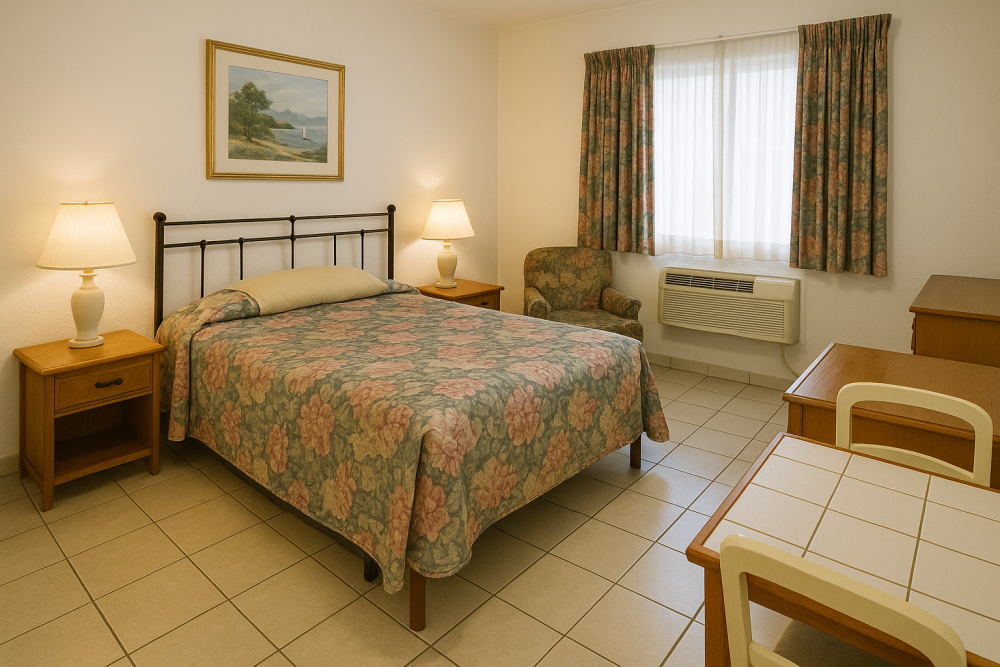
The Reality: Outdated Decor in an Instagram World
Today’s travellers book with their eyes. If your property looks like it belongs to your great-aunt, no amount of natural beauty outside will rescue it. Scrolling through Montserrat’s listings, a pattern emerges: tired furnishings, inconsistent photography, and unclear branding. Guests may forgive the lack of nightlife or limited shopping, but they won’t forgive feeling like they’ve overpaid for a low-budget experience.
Social media is the new travel agent. People book stays that photograph well. If the decor doesn’t inspire or at least reassure, potential guests swipe past. We can no longer afford to treat design as an afterthought.
Download the Hospitality Room Audit & Upgrade Cheat Sheet
Design as Invitation: Why First Impressions Matter
Design communicates value. A thoughtfully styled space tells a visitor: “We care about your comfort. We want you here.” In contrast, dated spaces suggest neglect and send the message that guests are just a transaction. In a competitive regional market, we must consider every guest touchpoint as an opportunity to impress and convert.
Design is also one of the few areas where even modest investments can yield outsized returns. A $3,000 upgrade in furniture, lighting, and linens can justify a 20 – 30% increase in nightly rates and lead to better reviews, more repeat guests, and stronger online visibility.
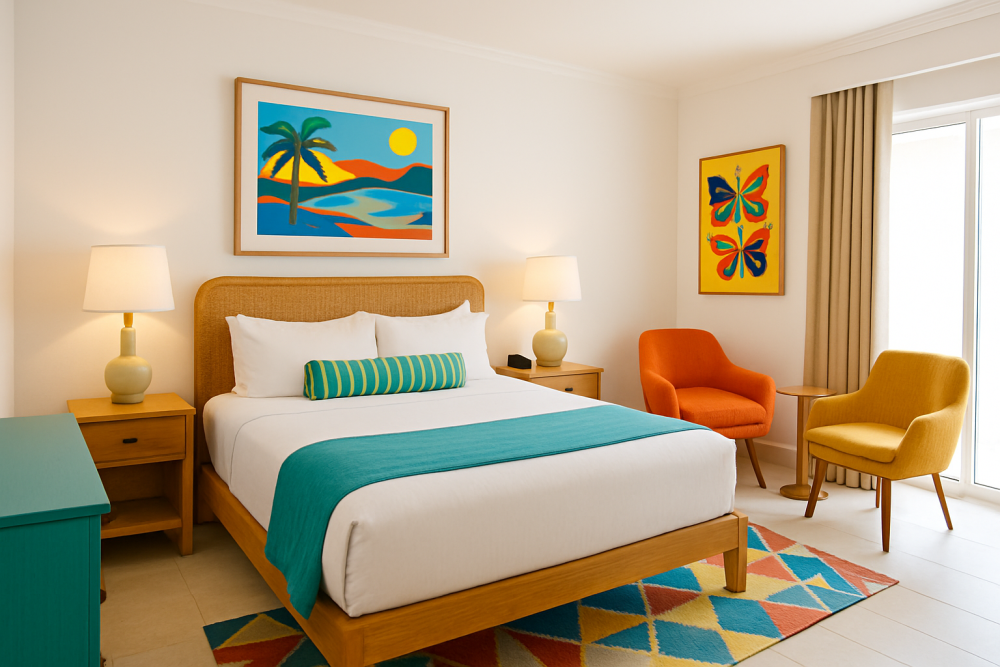
Who Are We Attracting? Misaligned Price vs Experience
Montserrat is not cheap to get to or stay in. Visitors must pass through Antigua or St. Maarten before arriving. Given this, we should be offering a boutique or eco-luxury experience, yet too many of our properties look and feel budget. This mismatch leads to disappointment and poor reviews.
We must get honest about our market positioning. If we want to attract discerning travellers, our presentation must rise to the occasion. Alternatively, if we want to cater to budget-conscious explorers, we need to price accordingly and still deliver charm and authenticity through design.
Global Trends in Hospitality Aesthetic
Across the Caribbean and beyond, the design bar has been raised. Minimalist decor with natural textures, neutral tones, local art, and sustainable materials dominate the boutique hotel and high-performing Airbnb scene. Travellers want to feel immersed in a place, not trapped in a dated template.
Destinations like Grenada, Dominica, and St. Lucia are embracing updated, eco-conscious design that still feels local. Montserrat can do the same, but we must stop treating decor as frivolous. It is strategic.
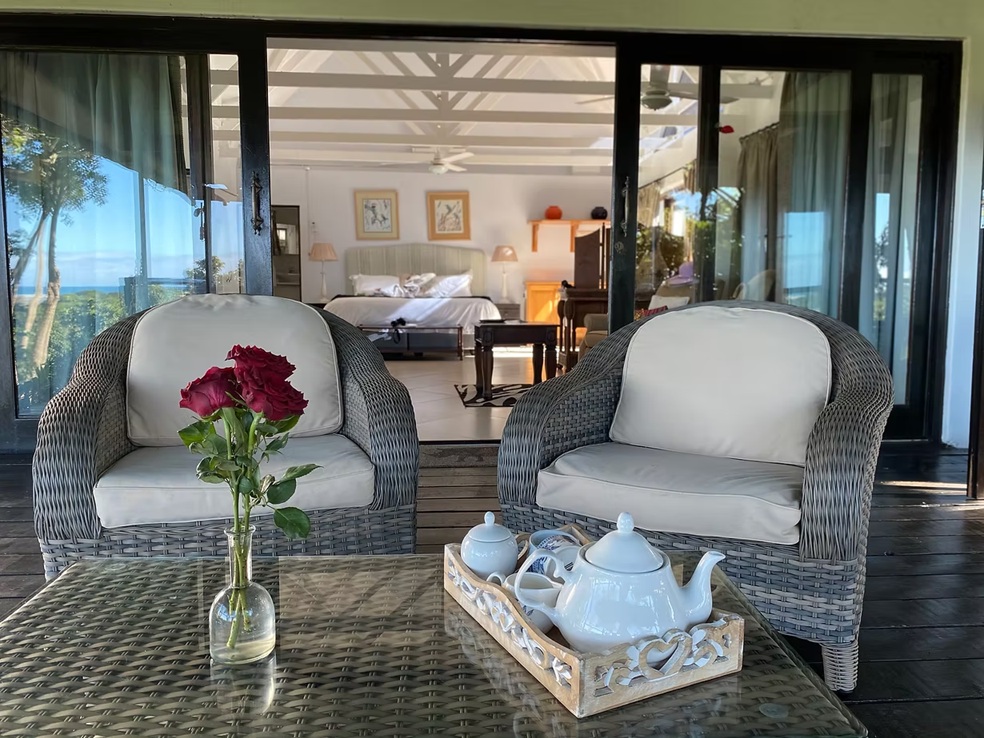
Caribbean Design Done Right
There are only a handful of villas and properties in Montserrat that have embraced modern island style – clean lines, open plans, wooden textures, thoughtful accents. They understand that guests are not just paying for a bed, but an atmosphere.
We must elevate these examples, learn from them, and bring our collective standard up. We don’t need to become a cookie-cutter destination, but we do need to become deliberate in how we present ourselves.
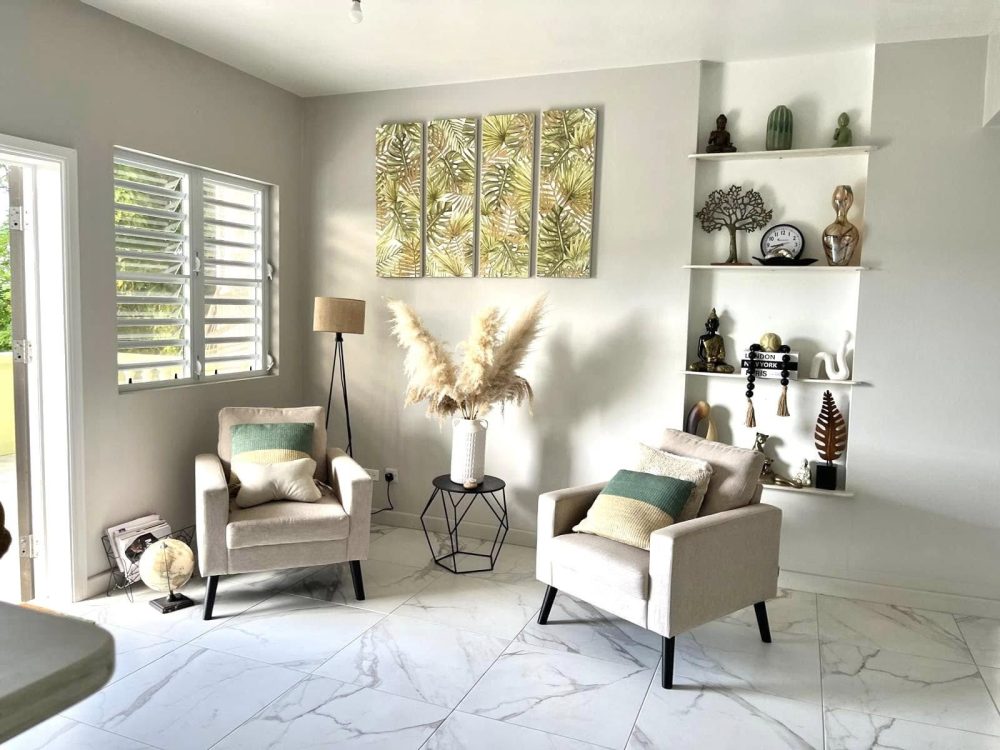
Institutional Support
The Montserrat Tourism Authority must take the lead in acknowledging and prioritising the design crisis. This includes launching a “Redesign for Growth” campaign that highlights the link between aesthetics and revenue.
The Government of Montserrat, through the Premier’s Office, can introduce financial incentives such as matching grants or tax deductions for significant upgrades. Training and mentorship partnerships with regional design institutes or vocational schools can build local capacity.
Bank of Montserrat Ltd. and the St. Patrick’s Cooperative Credit Union can introduce tailored loan products for hospitality upgrades, with flexible terms and support from business development officers who understand the unique needs of guest-facing enterprises.
Finally, a private Montserrat Hospitality Council is needed to champion these issues from within the sector. Made up of active property owners, restaurateurs, tour providers, and designers, this body can advocate for standards, create peer learning communities, and hold both government and industry accountable.
What Individuals Can Do Now
- Start with a small design audit of your property. Ask: What looks old? What feels mismatched? – Download the Hospitality Room Audit & Upgrade Cheat Sheet
- Replace one thing: bad curtains, old linens, floral bedspreads, or plastic chairs.
- Use platforms like Pinterest or Instagram to find low-cost, high-impact design ideas.
- Partner with local carpenters and artists to create custom, affordable pieces.
- Update your photos. Good visuals make a difference. – One academic study found that featuring well-decorated communal spaces (like living rooms) increases booking rates by 35%, translating into tangible earnings.
The Economic Impact
According to AirDNA, which monitors revenue for Airbnb and other booking platforms, properties with refreshed, attractive interiors can command up to 40% more per night and see 50% higher occupancy rates. In small destinations like ours, that translates into hundreds of thousands in additional revenue across the sector annually.
If even 30% of Montserrat’s properties upgraded their design standards, the impact would be transformative, not only in perception but in profitability, employment, and guest satisfaction. The time to start is now. Let’s not remain stuck while the rest of the world evolves.
